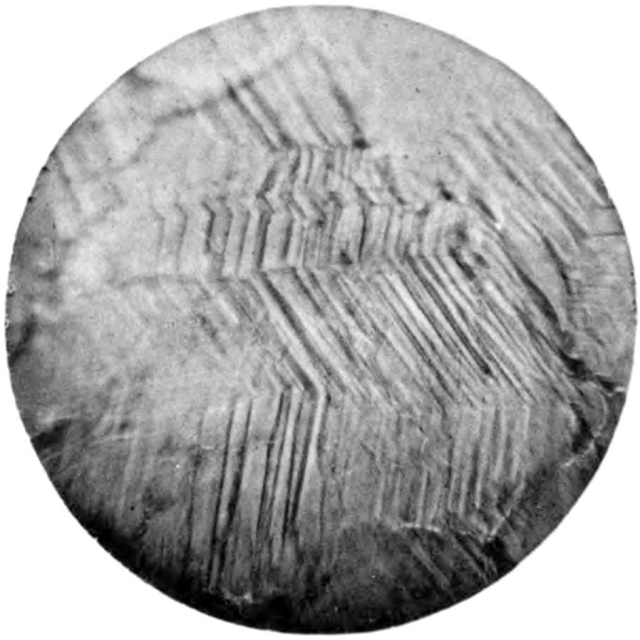thus producing a

Plate 26, Fig. 40
Slip-bands in twin crystals observed in a specimen of plumbers' sheet-lead. 100 diameters, vertical light.
illustrating J(ames) A(lfred) Ewing (1855-1935 *) and Walter Rosenhain (1875-1934 * **). “The Crystalline Structure of Metals.” Philosophical Transactions (of the Royal Society of London), Series A Containing papers of a mathematical or physical character (1900) : 353-375
“Still more striking in this respect is the appearance shown in fig. 40. The specimen in this instance was an ordinary piece of plumber's sheet lead; the surface was scraped bright with a knife, and was then squeezed against a piece of plate-glass in a vice, thus producing a beautiful surface. The specimen was then very slightly bent in the fingers to develop slip-bands, and on examination under a high power it showed the appearance reproduced in this photograph.” p 368
—
“It seems to me that in nature there exists almost nothing other than the outlines of beauty, such as harmony, proportion, and similar things, which, following natural perception alone, must be found in every beautiful thing, while how beautiful objects are shaded in depends entirely upon our opinions.”
ex Giacomo Leopardi (1798-1837 *). Zibaldone : The Notebooks of Leopardi. Edited by Michael Caesar and Franco D’Intino (2013) 9 : 10
tags: beauty; metallurgy; outlines; rounds; shades; J. A. Ewing & W. Rosenhain, “The Crystalline Structure of Metals” (1900); Leopardi